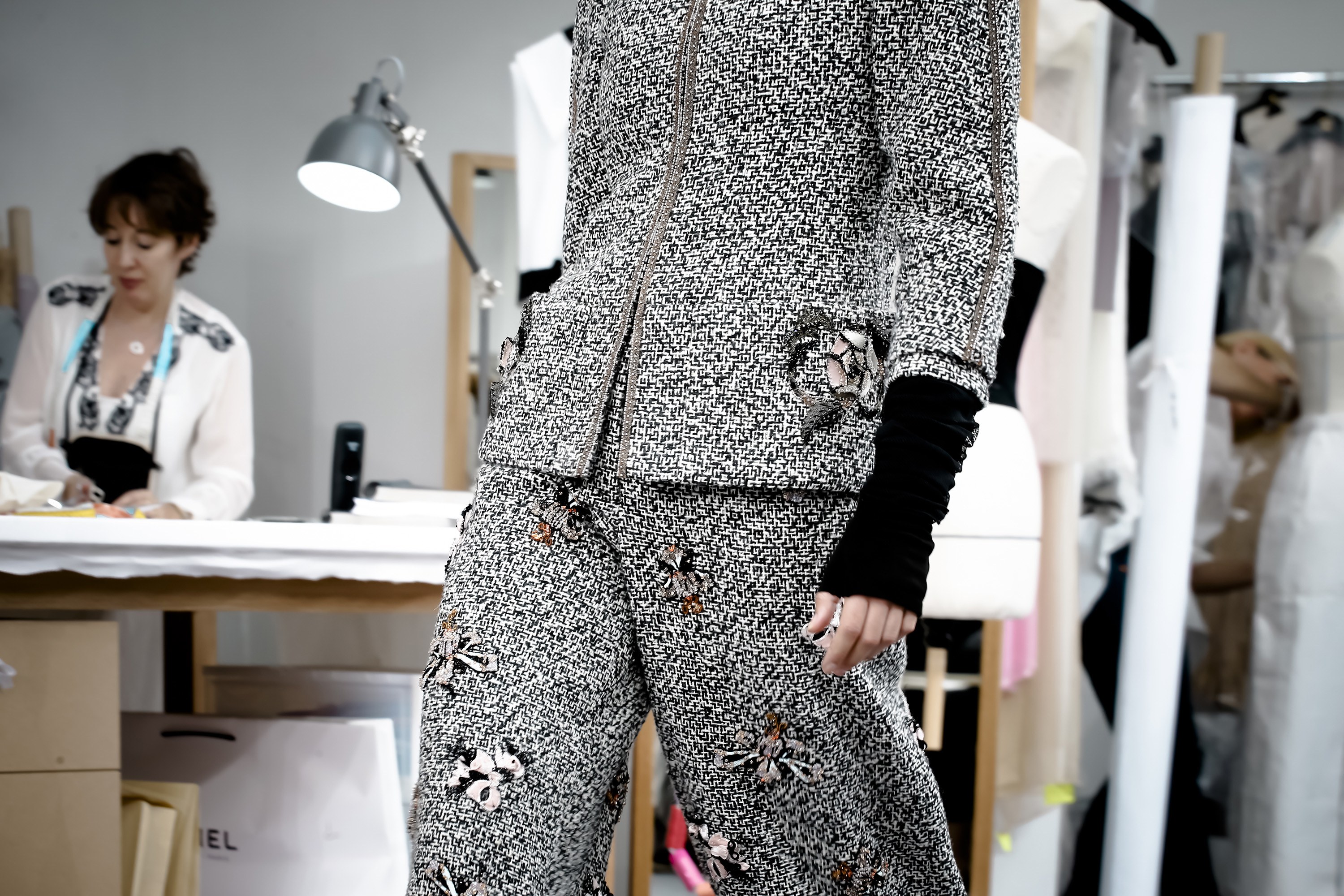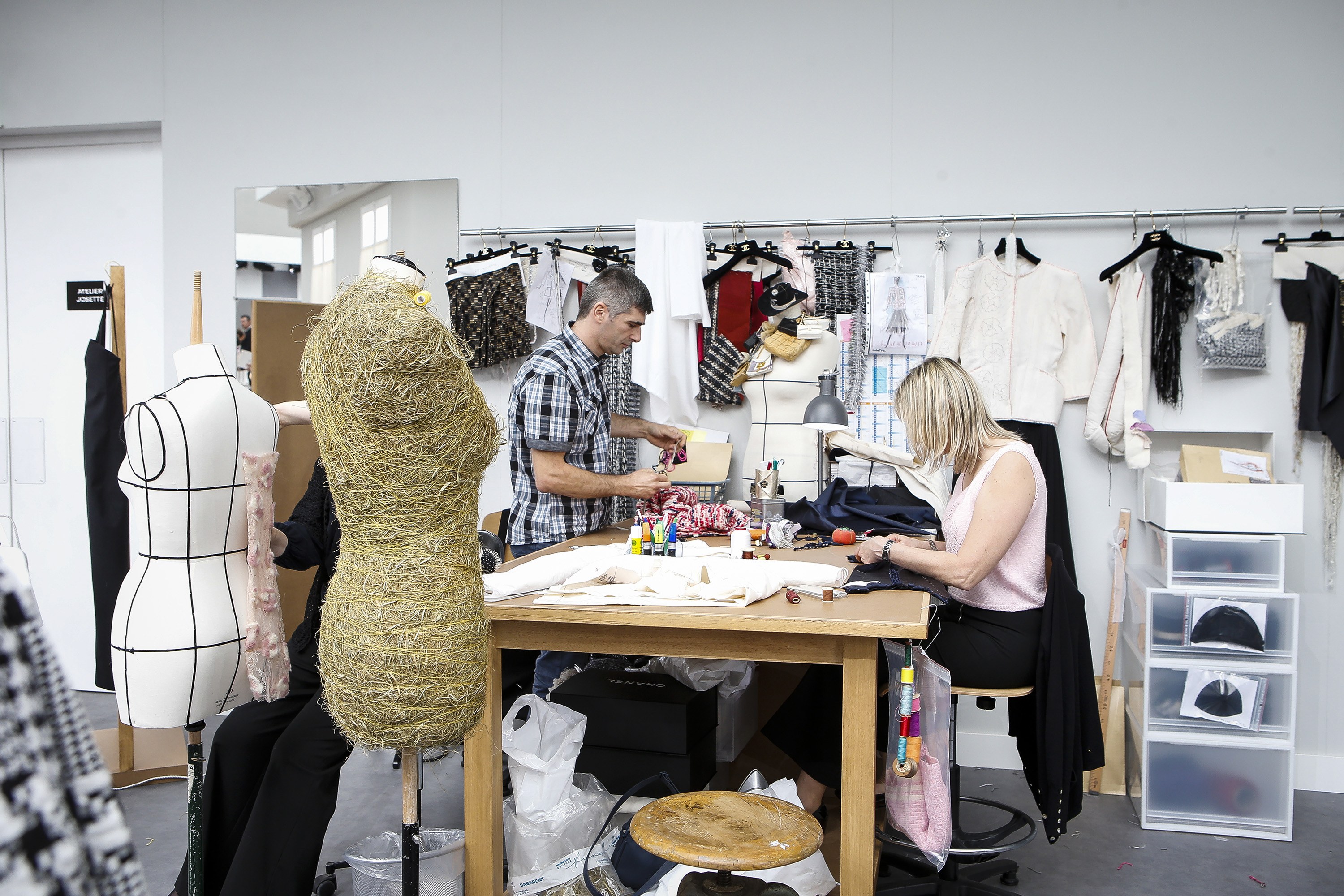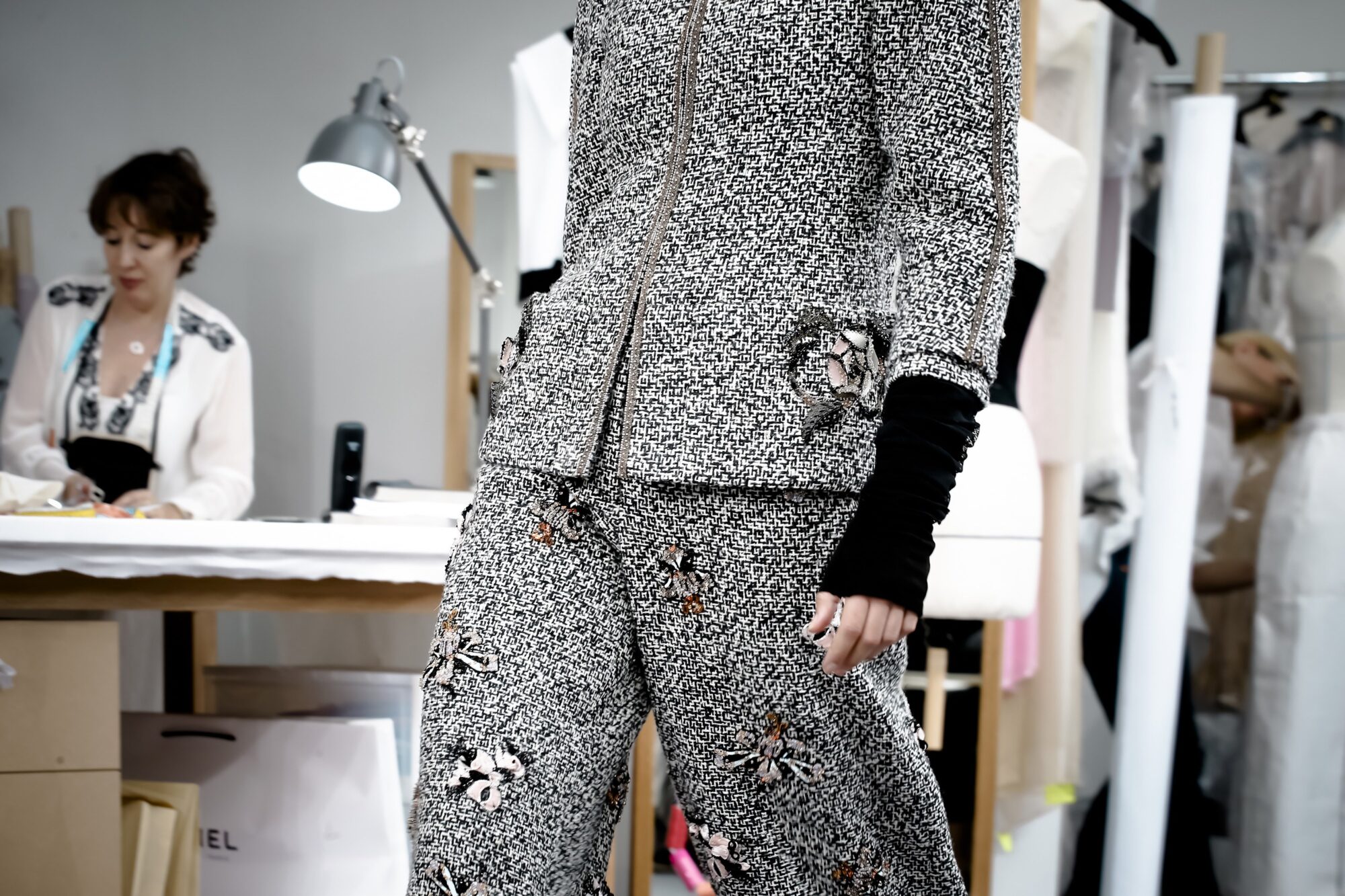One of my favourite months in the seemingly nonstop fashion calendar is July, as it celebrates one of its most beautiful, artistic facets: haute couture. In this occasion━and probably, surprising no one━Karl Lagerfeld’s runway show for Chanel included a whole performance revolving around the collection. But this time, rather than the eccentricities brought together by the Chanel brasserie or the quirky supermarket he brought to life in past collections, Lagerfeld revived a more nostalgic phase of fashion, constructing his performance around the whole atelier Chanel, and bringing some of his petites mains━the ‘small (I would say invisible) hands’ of the seamstresses that create the beauty of his designs━to light.
*
In many ways, haute couture━and its fashion week, which took place earlier this week in Paris━celebrates the height of fashion as an exclusive, luxurious phenomenon to which only the wealthiest have access. Indeed, its participation in the larger fashion market is small, with only a couple hundred customers around the world━although probably not in terms of incomes for the few fashion houses that have a couture division━thus being almost inaccessible to the average person, regardless of how passionate about fashion they really are.
But as a product to be seen by us, outsiders of the haute couture market but lovers of fashion, couture week is also a performance; it is a way in which the ruling class of the fashion system communicates, rather nostalgically, its history, its legacy, and the values that gave birth to fashion over three centuries ago. Couture celebrates luxury and, with it, traditional craftsmanship━despite it including newer technologies more often every time━and one of the most important myths of fashion: the idea of the ‘genius’ designer.

Such an idea, which developed together with late-nineteenth-century capitalism and the birth of the consumer society we live in, positions the designer as a rather godly figure that shapes fashion, as the only one responsible of every fashionable creation, as the mastermind behind trends. As Christopher Breward tells us in “The Rise of the Designer” (a chapter of his book Fashion), “the standard literature [in fashion] tells us that a succession of great makers have made the most significant contributions to the progression of fashionable style…” It is not surprising, as Breward himself explains,
…that the role of the fashion designer has been so consistently highlighted in fashion’s own mythology. In the mystique that has grown up around the designer’s working practices and professional identity commentators have found a convenient way of avoiding the much more complex and sometimes unsettling network of economic, aesthetic, and moral factors which constitute the idea or problem of fashionable modernity.
Despite fashion being created by networks of production, in which no single person but a relatively large group brings to life the ideas the designer puts on paper, and where the streets and ‘normal’ people have acquired greater roles in the past century or so, for many, the fashion designer━and anything his name connotes━is fashion. This idea, which started shaping with the increasingly popular Rose Bertin, the most famous marchande de modes in the times of Marie-Antoinette, followed by Charles Frederick Worth, the ‘first fashion designer’, who learned to tell women what to wear━rather than just ‘suggesting’ ideas, like Bertin probably did━only came to be fully developed by Poiret and Chanel, who understood the importance of performance in the selling of fashion, of storytelling and branding.

The idea of performance and storytelling seems to be well-known by most designers, many of them owning semi-personal Instagram accounts that help them perform their identity as creators of fashions (see Olivier Rousteing), and has been exploited by the rise of fashion designer documentaries of the type of Dior and I. But if there is one designer that is well aware of the potential of performance, it must be Lagerfeld━probably living on the heritage of Coco Chanel herself in this matter. From colorful supermarkets to an elegant French Brasserie, from airports to stuck-in-time paradisiac Cuba, Lagerfeld knows how to make each one of his runway shows for Chanel a unique fashion statement. All of this in a fashion system that is more outdated than ever, that feels stagnant even to its most avid consumers and that, in the midst of the economic and social peril we seem to be living in, is probably also endangered itself━a fear seen explicitly in so many fashion commentators asking themselves whether it is the end of fashion in the past year or so.
To Lagerfeld, it seems, the end of fashion is not yet in the horizon, and Chanel seems to support him. For the past decade, the house has advocated for the permanence of traditional techniques of fashion, which include, beyond embroidery, tailleur (tailoring) and flou (dressmaking), millinery and artificial flower-making, by acquiring smaller ateliers such as maisons Lesage and Michel, all while adopting newer technological advances such as laser-cutting techniques. This means that, if anything, Chanel and Lagerfeld are advocating for change, for a revival of the industry adapted to our times. And showing this, I would argue, was the aim of Lagerfeld’s performance last Tuesday at couture week.

Showing a collection consisting of already traditional designs for the house of Chanel━suits, tweed and hand-embroidery━mixed with more modern elements━jumpsuits and culottes, laser-cut flowers and 3D plastic embroidery━Lagerfeld recreated the experience of the haute couture atelier in his runway show. And, aided by the increasingly fast diffusion of images allowed by the Internet and social media, he could show to the world what it takes to make couture: a group of exceptionally talented artisans that bring the ideas of the designer from drawings on paper to wearable garments for the modern woman.
Writing for Business of Fashion, Tim Blanks argues that:
…if you wanted to read a subtext into such an action in the chill aftermath of Brexit, you could say that it was Lagerfeld’s way of reminding us that no man is an island. He wouldn’t be the Mighty Karl without his petites mains.
But━I would add━he was also embracing a new trend, probably brought about by a new generation, in fashion: the return to the native, to the artisanal, to the hand-made. Younger generations of fashion consumers━read: millenials━seem to have gotten over the allure of the designer name and find it increasingly boring to shop at age-old fashion establishments, such as Chanel itself. But by returning to the elevation of the craft, Largerfeld was catering to this new love for nostalgia that seems to rule the tastes of younger, ‘hip’ fashion consumers. And choosing to end his show sharing the runway with the premières of his ateliers, right after having Edie Campbell close the catwalk with a very modern━for lack of a better word━wedding gown, made up of pink culottes and matching embroidered coat with train, seems to confirm such a hypothesis.
Photography via Vogue/Indigital
